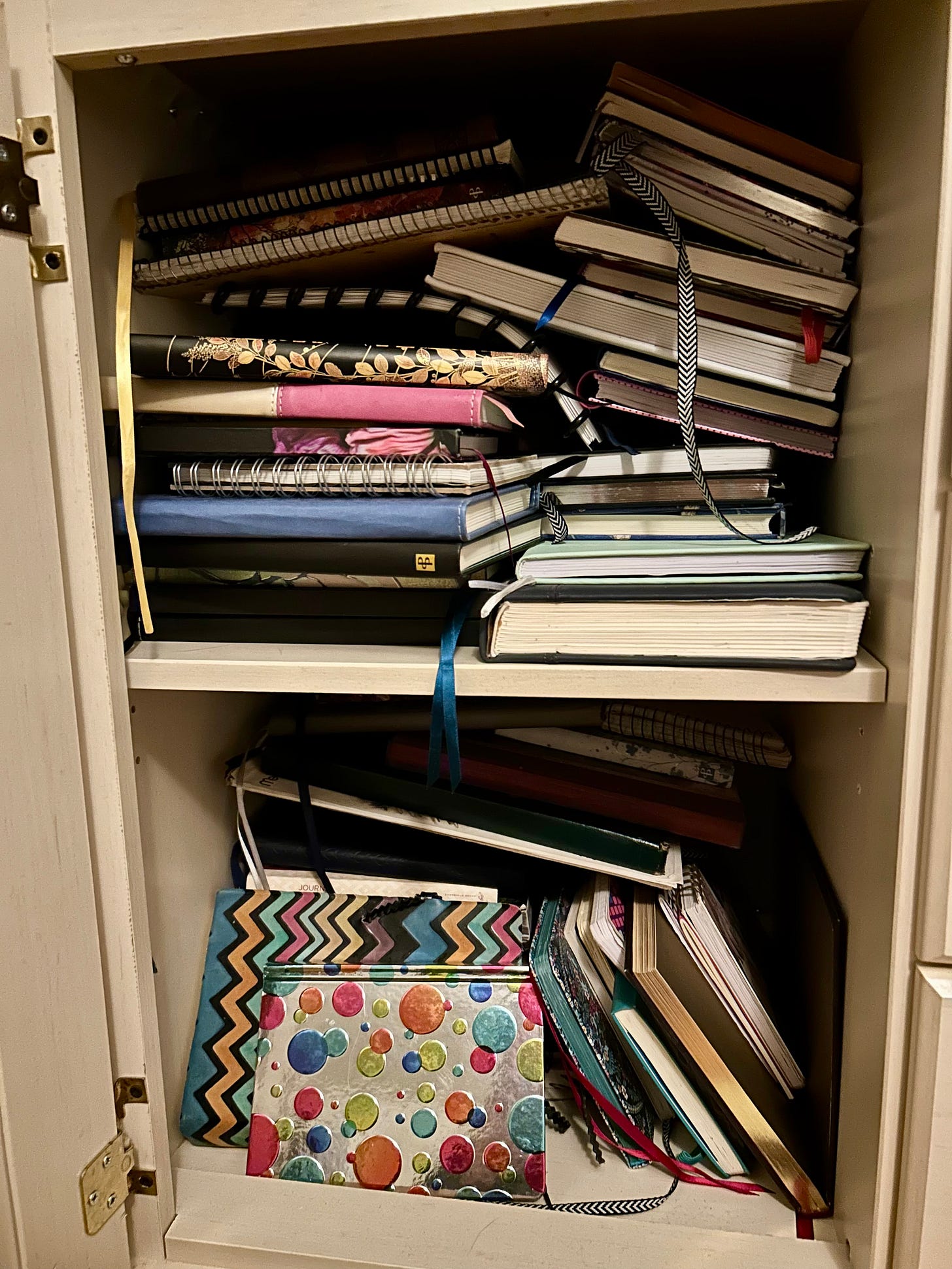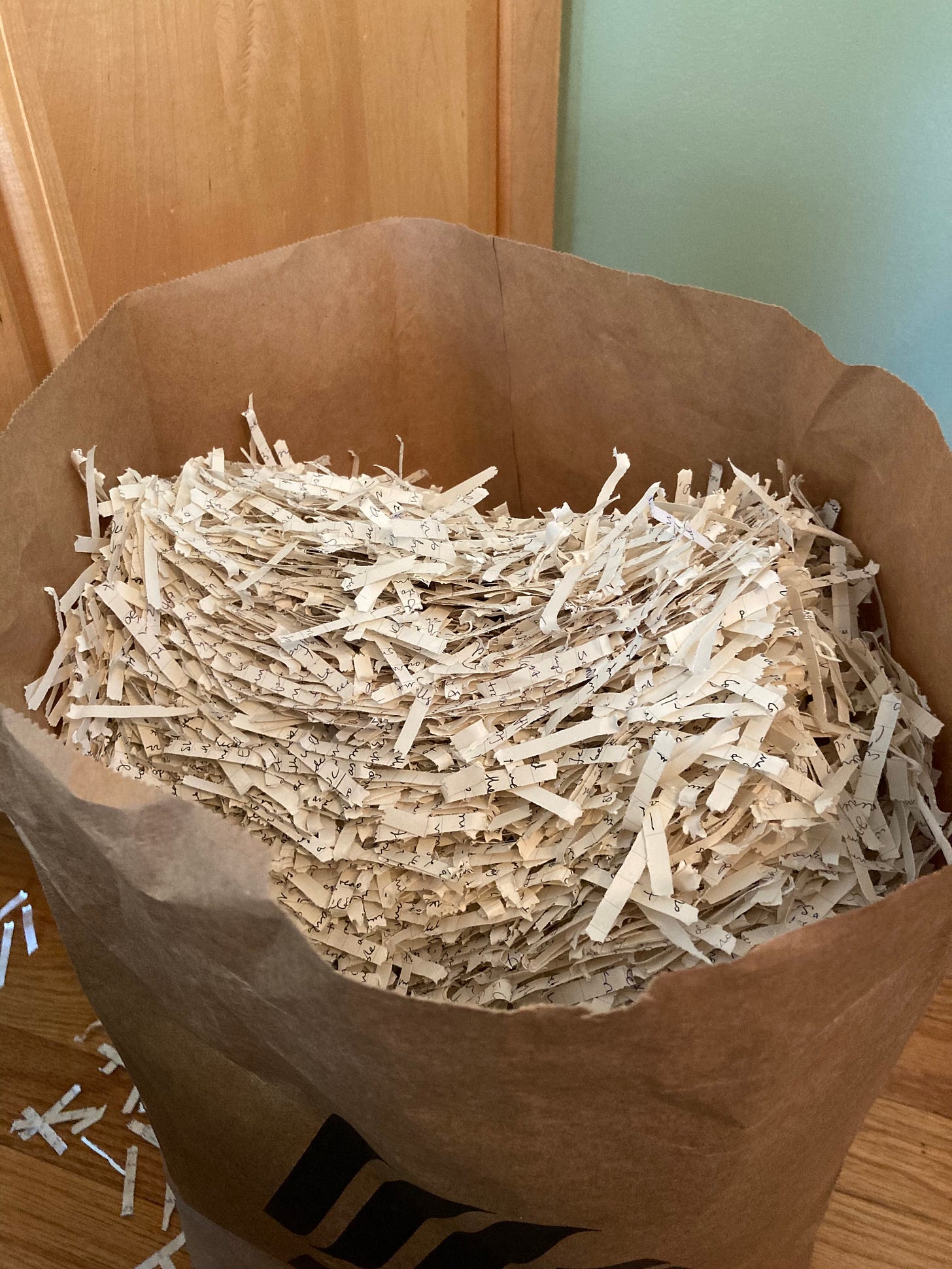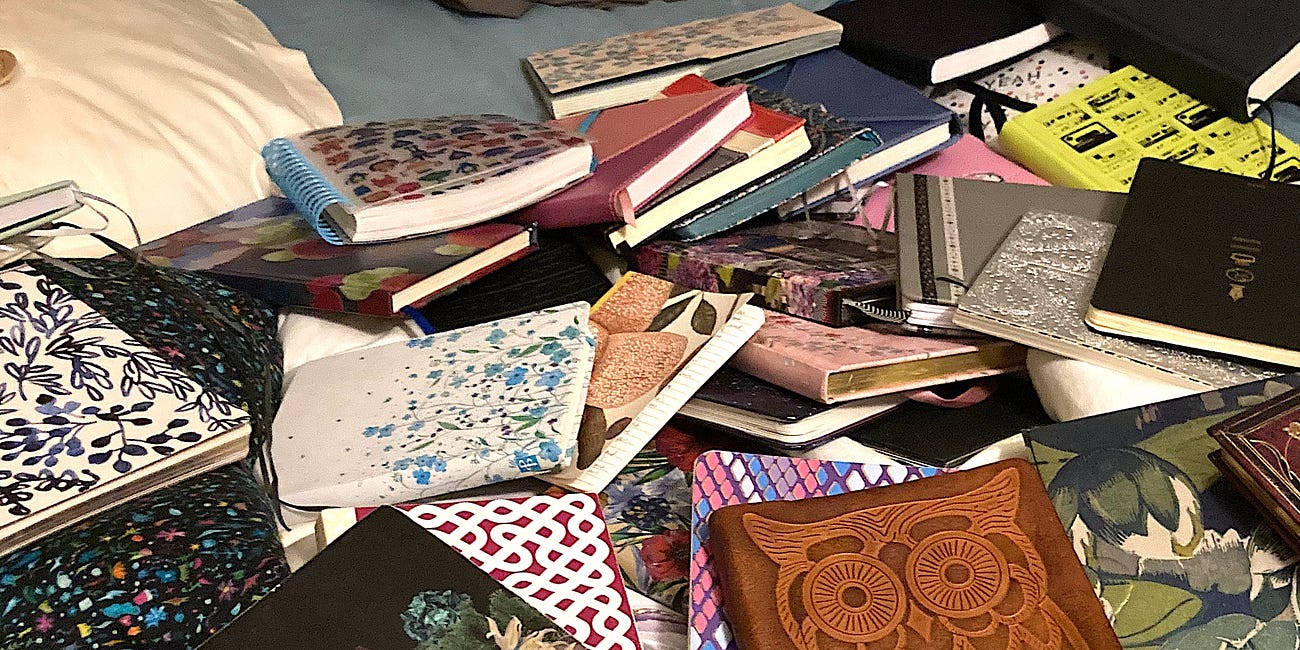Lessons from Journaling in the Digital Age
three NEW things I've learned in my decades-long journaling journey
A while back, I shared five life lessons that more than 30 years of journaling have taught me. Here are three more recent ways the practice is transforming my thinking.
LESSON 1 - Journaling is an ideal complement to AI.
I started journaling in 1991, in a spiral-bound notebook from Woolworth’s. Back then, in middle school, my urgent need was to carve space to express my emotions. In 2025, the blank page is still my refuge, but it now has a different purpose.
I’m no longer tucking myself away, but rather diving into my perspective. In an environment of overwhelming noise, I use the journal to explore: What’s clear for me, individually, right now? What am I expecting next? What am I choosing?
With AI’s ascendance, this self-inquiry is vital. The temptation to outsource decision-making grows with each increasingly capable model. Substacker Gurwinder Bhogal beautifully articulates the modern-day imperative for written self-interrogation:
“Write, even though machines can write for you, because the purpose of writing is not just to produce writing, but to distil your thoughts, refine your beliefs, and maintain your agency.”
-Gurwinder, Avoiding the Automation of Your Heart
To be clear, I am a huge fan of generative AI. Part of my business involves coaching writers on using it to support their process. However, my first principle and continual refrain is that AI is an assistant, NOT a guide.
AI distills collective knowledge, but it cannot stand in for individual discernment, let alone authentic desire. Journaling enables clarity on what you know — through your singular, irreplicable lived experience — to be real and meaningful and important. Once that vision is articulated, the Bot can be a great help, but approaching it as an oracle foregoes your chance at fulfillment.
LESSON 2 - Voice-to-text can substitute for handwriting.
I have been extremely reluctant to give up pen and paper. I love the intimacy of scribbling in my unique handwriting. I crave the tactile transfer of ink, the heft of the pen, the textured covers and smooth pages. I choose each new journal with reverent care in a cherished bookstore ritual.
My 45-year-old writing hand is less enthusiastic. I hate to admit how much it hurts now to write extended entries. I’ve already had physical therapy to try to calm the inflammation, and it’s obvious my days of hours-long journal sprints are over.
Typing is one option, which many of my journaling students prefer. For me, though, it isn’t effective. Instead of unruly cursive, I see tidy font, conjuring an anonymous external reader. Longhand is what signals to my mind that the text is for my eyes only.
Thank goodness I finally found a hack: the speech-to-text function, using the Notes app on my iPhone. Hearing the inflection in my voice works very much like seeing my handwriting. Oddly, this seems to work because it’s awkward. Babbling aloud thoughts I don’t want to share creates a strange and productive incongruence.
I still won’t give up writing in physical journals. But as a supplement when my writing hand requires rest, voice-to-text is a great new addition.
LESSON 3 - My younger self needs my approval.
Entering midlife set off journal-related alarm bells. For some writers, these volumes are a wonderful record to leave behind for their families. But my journal, for a great many years, served primarily as my psychic waste dump.
Woe to the loved one who would trek that sludge. They’d mistake my very worst parts for my truest.
To prevent this nightmare, I committed to destroy the archive. The completed journals have done their job getting me through their respective eras. I figured I would give each one a quick read, then say a fond farewell via shredder.
So I started at the beginning. I expected to be sympathetic to what I read. What I did not expect was to find myself directly addressed by the writer. From the first pages of the Woolworth’s book, the adult reader (me!) is acknowledged and petitioned.
Let me never be ashamed of these words I pour forth. Let me always know their truth, writes 12-year-old Elisabeth.
In reading back through those entries, I reconnect with their purpose of accepting my broken young heart. That time remains my emotional low point. But that girl is keeping it together by picturing me, now, remembering her and appreciating her.
And I can remember looking forward to this moment, when I would find that journal, and feel proud of the girl who wrote it. A refraction opens, like standing between two mirrors: now remembering then imagining now remembering then.
And I integrate. I’m so proud of you, I say inside myself. Thank you for writing to me.
More Resources:
🏕️ Summer Journaling Camp — Explore your authentic yes and no in a playful, guided journey of self-discovery. Enrollment opens soon: Join the waitlist to be notified when doors open and get a free guide to my favorite journaling exercise.
🚫 50 Ways to Say NO — Go-to phrases to protect your boundaries and why they work. Also available as a card deck.
5 Things I Learned from Journaling for 30+ years
I started journaling in middle school, and am still at more than 30 years later. Journaling has been, by far, the most helpful habit in my life. Here are a few of the lessons I have learned from journaling consistently over time.
.





I may have the solution to your lesson two problem… ever considered learning shorthand? Allows for the same tactility/brain engagement of pen and paper without the hand cramps as the forms are more ergonomic. Then you can braindump at the speed of thought. A bit of an investment to learn, but very rewarding!